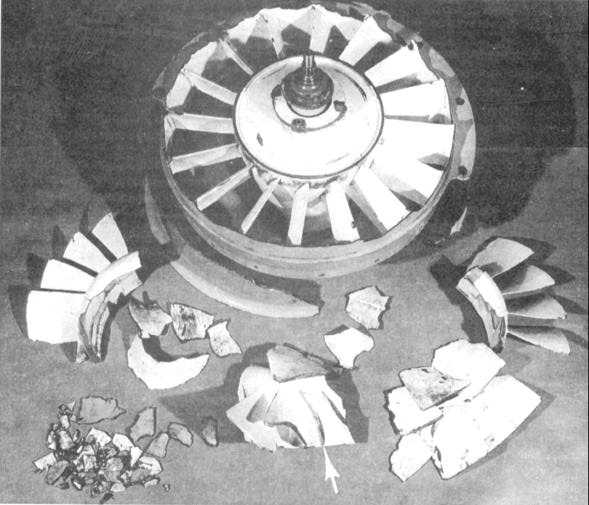205.158
Figure 4-14.—Oil cooler blower disintegration.
Filiform Corrosion
Filiform corrosion (fig. 4-15) consists of
threadlike filaments of corrosion known as underfilm.
Metals coated with organic substances, such as paint
films, may undergo this type of corrosion.
Filiform corrosion occurs independently of light,
metallurgical factors, and microorganisms present. It
takes place when the relative humidity of the air is 78
to 90 percent and when the surface is slightly acidic.
Although the threadlike filaments are visible only
under clear lacquers or varnishes, they also occur
under opaque paint film. Filiform corrosion can attack
steel, aluminum, and magnesium.
Microbiological Corrosion
Microorganisms contained in seawater can be
introduced into fuel systems by contaminated fuel.
These fungus growths attack the sealing material used
on integral fuel tanks. They can cause corrosion of
aluminum, probably by aiding in the formation of
concentration cells. Residues from biological growth
tend to clog fuel filters and coat fuel quantity probes.
Fuel quantity probes thus coated give erroneous
readings. Also, moisture aides in the growth of fungi
and microorganisms in avionic equipment.
Q45.
The tarnishing of silver is a common example of
what type of corrosion?
Q46.
Pitting is the most common effect of corrosion on
what alloys?
Q47.
Pitting corrosion is first noticeable as what color
deposit on a metal surface?
Q48. How can concentration cell corrosion be
controlled or even prevented?
Q49. Define intergranular corrosion.
4-25

